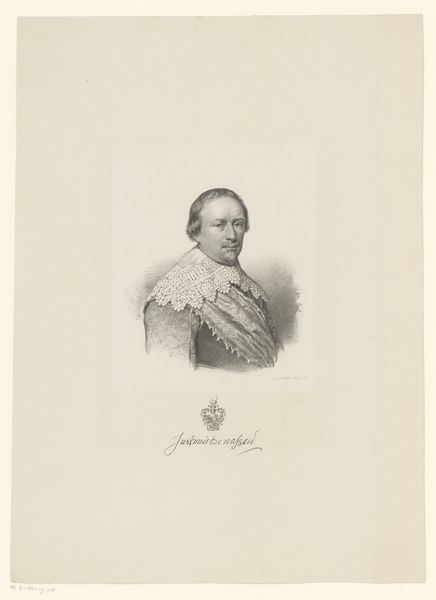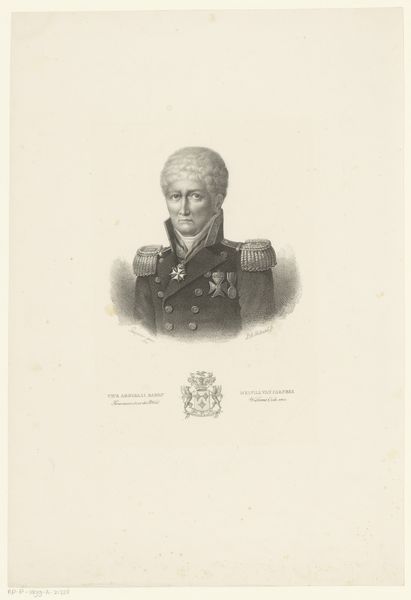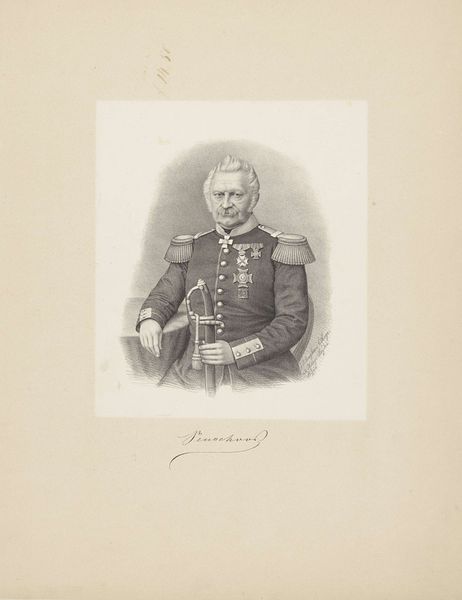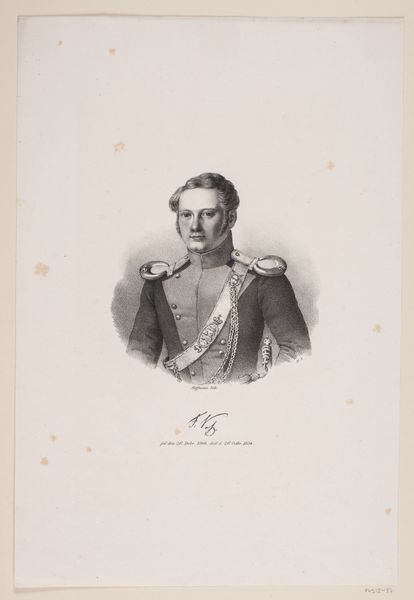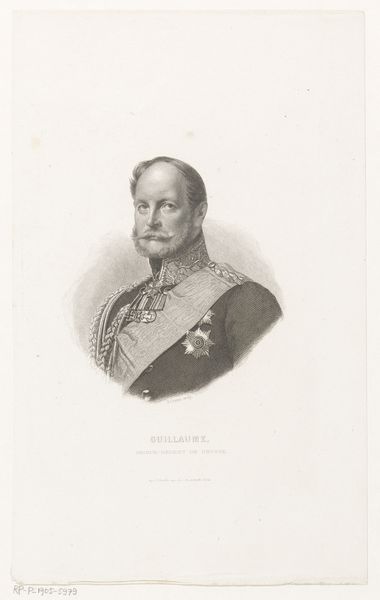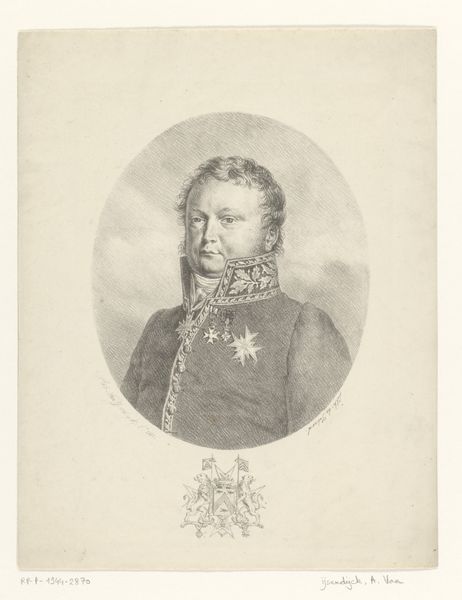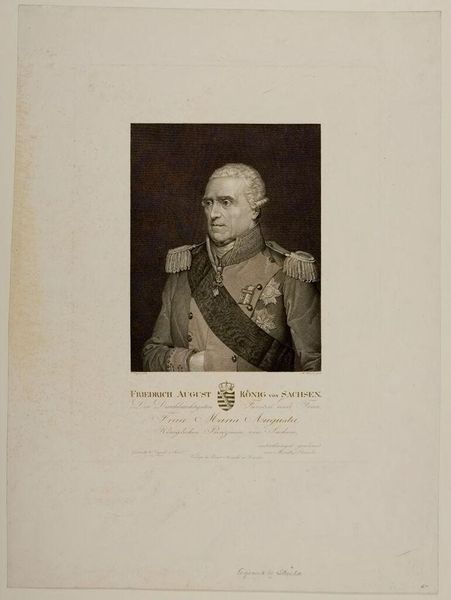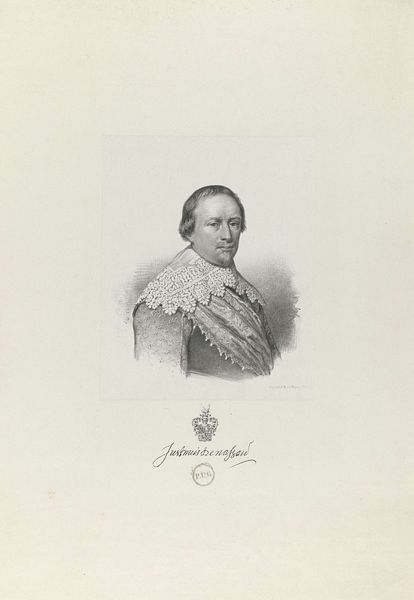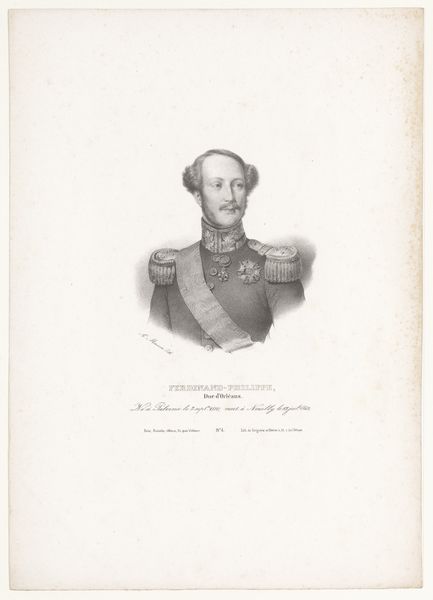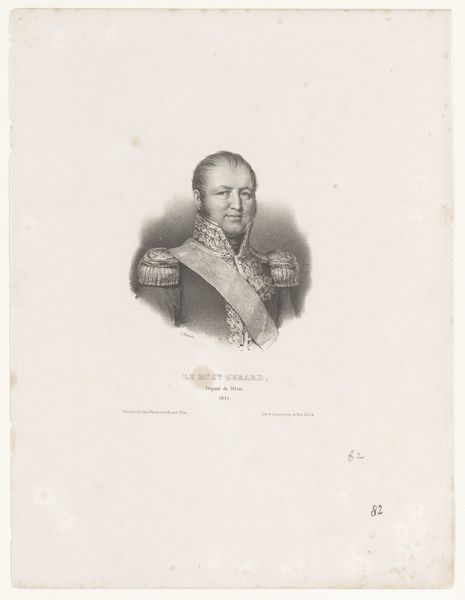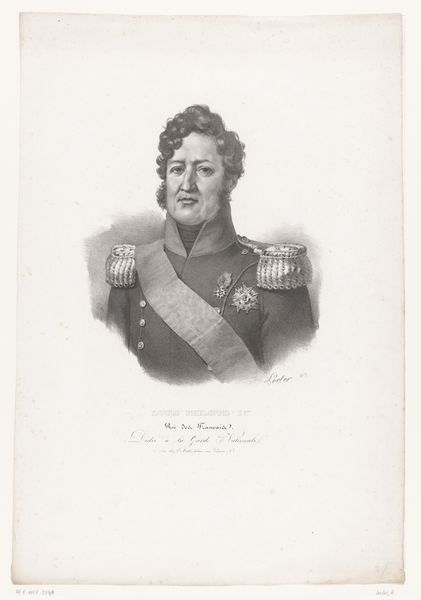
drawing, graphite
#
portrait
#
pencil drawn
#
drawing
#
pencil sketch
#
charcoal drawing
#
pencil drawing
#
graphite
#
portrait drawing
#
history-painting
#
academic-art
#
realism
Dimensions: height 560 mm, width 438 mm
Copyright: Rijks Museum: Open Domain
Curator: Looking at this portrait, there's a distinct coolness to the color palette, even austere. I wonder how that impacts the perceived status of the figure. Editor: This is Isaac Cornelis Elink Sterk's "Portret van Hendrik Merkus de Kock," created in 1853. What we're seeing is a graphite and pencil drawing held in the collection of the Rijksmuseum. What captures my attention is the duality here. We see the stern rendering of the military figure but there's also what looks like a crest or perhaps some kind of official rendering toward the bottom of the piece as well. What’s your read? Curator: That crest definitely functions on a symbolic level, suggesting lineage or authority, some kind of visual claim to power. Though for me, it's also simply a continuation of technique, more linear detailing adding depth of form to the whole picture, which makes me curious about its production. Was it a study for something larger or intended as a work unto itself? What can that detail at the bottom suggest to us? Editor: That's precisely the sort of connection that intrigues me, that the technique and materiality speak directly to questions of power. It isn't merely symbolic, it is almost structural. I also keep circling back to the coolness of tone, though. Curator: Right, because it could be the literal material of the graphite, but there is definitely an attempt to create neutrality, some evenness to how one should interpret the picture and sitter. The rendering overall isn't particularly emotive, it aims to document rather than inflate or distract. Editor: Exactly! In terms of cultural memory and portraiture, it creates a historical marker rooted more in precision and objective record than celebration. Yet even so, the regalia, the finery in his dress cannot be ignored, and even those things bear symbolic weight within this picture. And that opens it up again, beyond a mere historical rendering, but almost toward some personal visual claim or heraldry. Curator: Absolutely, and perhaps those are in tension with each other. One aspect that creates that very "officialness" that the subject clearly values is in direct contrast with how exposed the drawing process is. We see that hatching of pencil marks laid bare! Editor: I agree completely; the exposed marks speak volumes about the intentions and purpose of the portrait and how it functions today. What do you make of that? Curator: Ultimately, this work blends an image of power with a revealing portrait process. In turn, a more complicated dialogue occurs, moving the artwork out of one, direct or symbolic interpretation. Editor: And it gives us insight into that mid-19th century approach to history, portraiture, and its symbolic claims of lineage or identity. I am happy we saw this piece today.
Comments
No comments
Be the first to comment and join the conversation on the ultimate creative platform.


